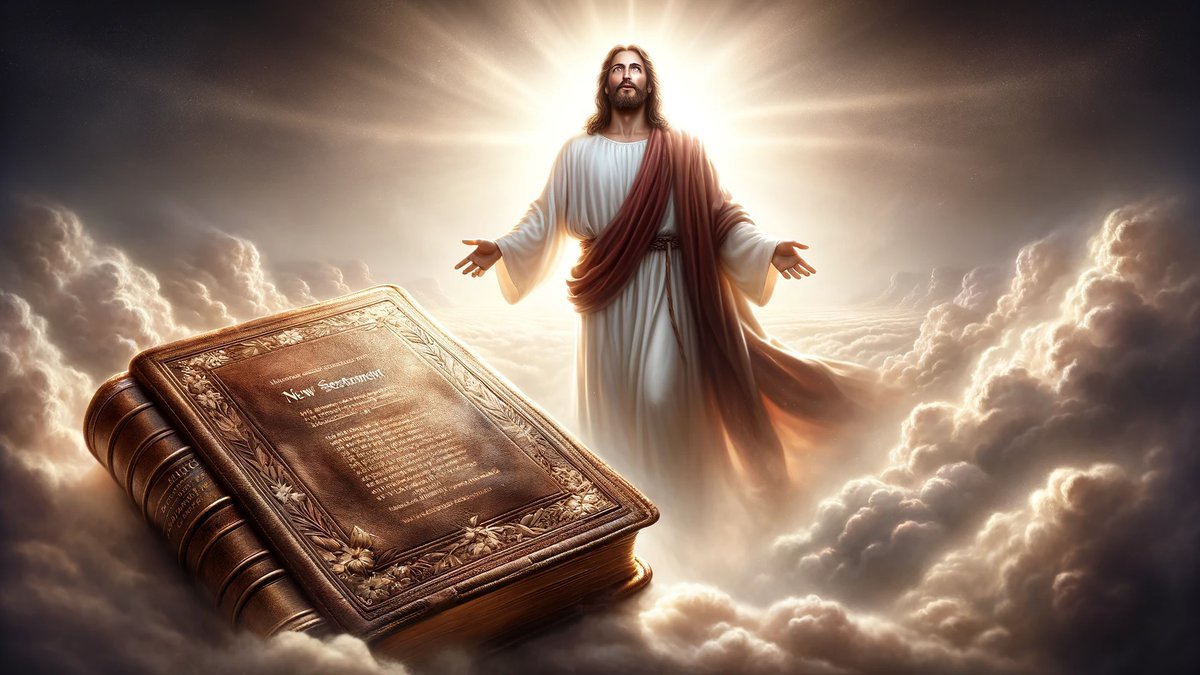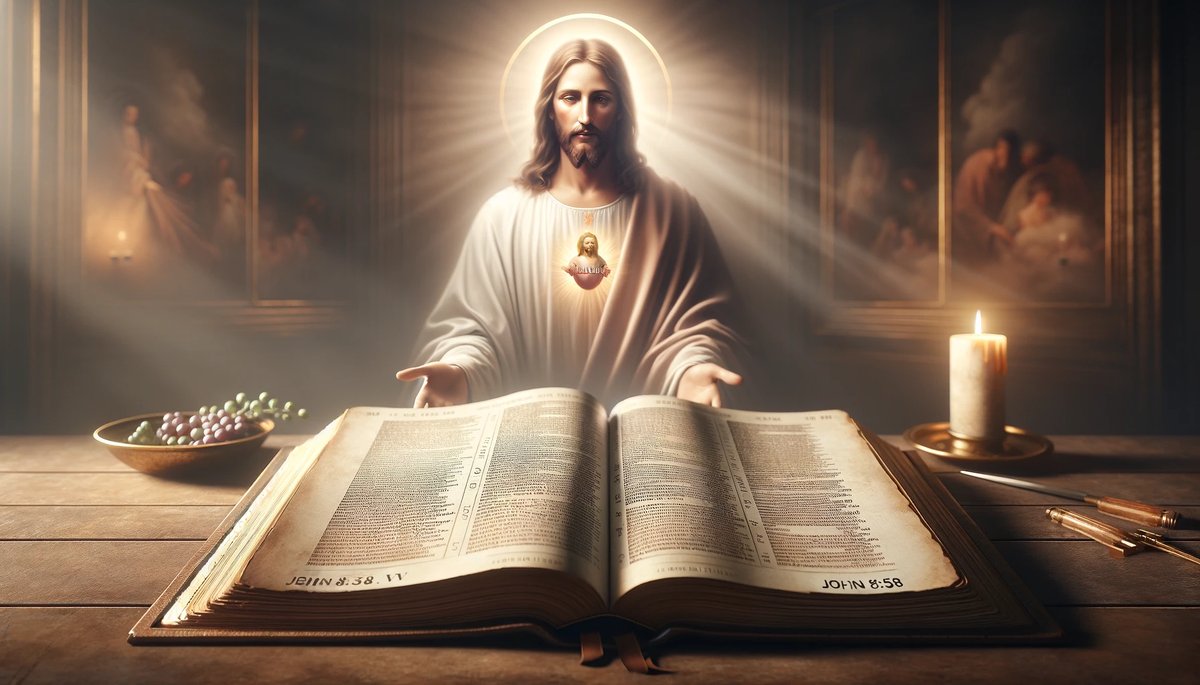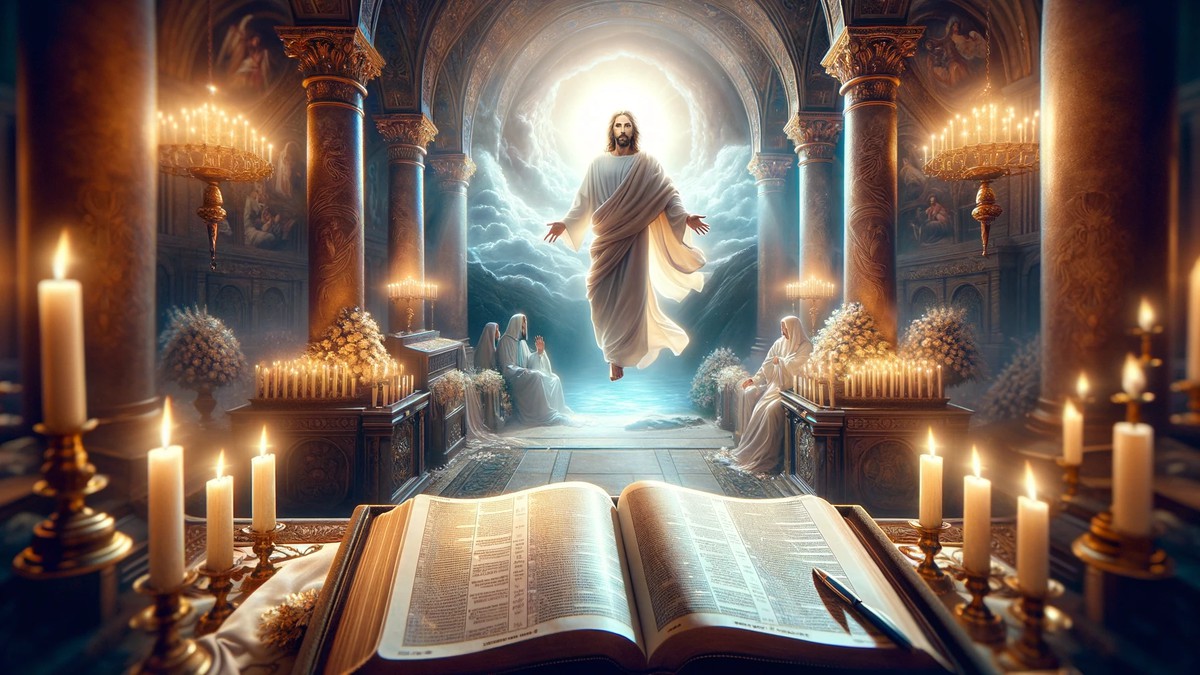Home>Christian Videos>Bible Stories>Where In The Bible Is The Crucifixion Of Jesus Christ


Bible Stories
Where In The Bible Is The Crucifixion Of Jesus Christ
Published: March 2, 2024
Ericka Andersen, an editor at Christian.net, expertly merges digital strategy with content creation, focusing on faith and societal issues. Her communication skills enhance the platform's engaging narratives, fostering meaningful dialogue on belief's impact on society.
Discover the biblical account of the crucifixion of Jesus Christ and its significance in the collection of Bible stories. Explore the profound impact of this pivotal event in Christian history.
(Many of the links in this article redirect to a specific reviewed product. Your purchase of these products through affiliate links helps to generate commission for Christian.net, at no extra cost. Learn more)
Table of Contents
Introduction
The crucifixion of Jesus Christ is a pivotal event in Christian theology, symbolizing the sacrifice and atonement for the sins of humanity. The Bible, the holy book of Christianity, provides detailed accounts of this significant event. In this article, we will explore the various passages in the Bible that describe the crucifixion of Jesus Christ, shedding light on the different perspectives presented in the Gospels, the Epistles of Paul, Old Testament prophecies, and the Book of Revelation. Let's delve into the scriptures to uncover the profound significance of the crucifixion and its portrayal in the Bible.
The Gospels: Matthew, Mark, Luke, and John
-
Matthew: The Gospel of Matthew, one of the four canonical gospels, provides a detailed account of the crucifixion of Jesus Christ. In Matthew 27:32-56, the narrative unfolds as Jesus is led to Golgotha, where He is crucified alongside two criminals. The passage vividly describes the events leading up to the crucifixion, including the mocking of Jesus, the soldiers casting lots for His garments, and the inscription placed above His head. The Gospel of Matthew emphasizes the fulfillment of Old Testament prophecies and portrays Jesus as the fulfillment of God's redemptive plan for humanity.
-
Mark: The Gospel of Mark also presents a compelling narrative of the crucifixion. In Mark 15:21-41, the account depicts the journey to Golgotha, the crucifixion, and the events surrounding Jesus' death. Mark's portrayal emphasizes the suffering and abandonment experienced by Jesus, as well as the supernatural events that occurred, such as the darkness that covered the land. The Gospel of Mark underscores the profound significance of Jesus' sacrificial death and its impact on those who witnessed it.
-
Luke: The Gospel of Luke offers a unique perspective on the crucifixion, highlighting Jesus' compassion and forgiveness even in His final moments. In Luke 23:26-49, the narrative unfolds with Jesus carrying the cross, His interaction with the women of Jerusalem, and His eventual crucifixion. Luke's account also includes the powerful exchange between Jesus and the criminals crucified alongside Him, illustrating His message of redemption and grace. The Gospel of Luke portrays the crucifixion as a transformative moment, revealing the depth of God's love for humanity.
-
John: The Gospel of John provides a profound and theological portrayal of the crucifixion. In John 19:16-37, the narrative unfolds with Jesus carrying His cross, the crucifixion at Golgotha, and the poignant interactions between Jesus, His mother, and the beloved disciple. John's account emphasizes the fulfillment of Jesus' divine mission and the significance of His sacrifice for the salvation of humanity. The Gospel of John presents the crucifixion as a climactic moment in the revelation of God's redemptive plan, demonstrating the profound love and purpose behind Jesus' sacrificial death.
The Gospels collectively offer rich and multifaceted perspectives on the crucifixion of Jesus Christ, each contributing to the profound significance of this pivotal event in Christian faith.
The Epistles of Paul
-
Romans: In the Epistle to the Romans, Paul expounds on the significance of the crucifixion within the framework of God's redemptive plan. In Romans 5:6-11, Paul emphasizes the sacrificial nature of Jesus' death, highlighting how Christ's crucifixion reconciles humanity to God. He underscores the transformative impact of Jesus' sacrifice, portraying it as the ultimate expression of God's love for humanity. Paul's epistle elucidates the theological depth of the crucifixion, emphasizing its role in justifying and redeeming believers.
-
1 Corinthians: Paul's first letter to the Corinthians delves into the profound implications of the crucifixion within the context of Christian theology. In 1 Corinthians 1:18-25, Paul addresses the paradox of the cross, emphasizing how the message of Christ crucified is the power and wisdom of God. He challenges the prevailing wisdom of the world, highlighting the transformative power of the crucifixion in bringing salvation to those who believe. Paul's epistle underscores the centrality of the crucifixion in shaping the Christian faith and its significance as the focal point of God's redemptive work.
-
Galatians: The Epistle to the Galatians features Paul's impassioned defense of the crucifixion as the means of salvation and freedom from the bondage of the law. In Galatians 2:20, Paul articulates the profound personal impact of the crucifixion, emphasizing the believer's identification with Christ's death and resurrection. He underscores the transformative power of the crucifixion in liberating believers from the power of sin and the law, highlighting the freedom and new life found in Christ. Paul's epistle emphasizes the crucifixion as the cornerstone of Christian faith, shaping the believer's identity and relationship with God.
-
Philippians: In the Epistle to the Philippians, Paul reflects on the humility and exaltation demonstrated in the crucifixion of Jesus Christ. In Philippians 2:5-11, Paul presents Christ's voluntary self-emptying and obedient death on the cross as the ultimate example of humility and sacrificial love. He emphasizes the exaltation of Christ following His crucifixion, highlighting the universal lordship and glory ascribed to Jesus. Paul's epistle underscores the transformative and exalted nature of the crucifixion, shaping the believer's understanding of Christ's redemptive work and the call to emulate His selfless love.
The Epistles of Paul offer profound theological insights into the significance of the crucifixion, emphasizing its transformative impact on believers and its central role in shaping Christian faith and identity.
Old Testament Prophecies
-
Isaiah: The book of Isaiah contains numerous prophecies that foreshadow the crucifixion of Jesus Christ. In Isaiah 53, often referred to as the "Suffering Servant" passage, the prophet vividly portrays the suffering and atoning sacrifice of the Servant, who is wounded for our transgressions and bruised for our iniquities. The detailed description of the Servant's affliction, rejection, and redemptive purpose aligns with the events surrounding Jesus' crucifixion, emphasizing the prophetic fulfillment of His sacrificial death.
-
Psalms: The Psalms also contain prophetic references to the crucifixion, offering poignant insights into the suffering and vindication of the Messiah. Psalm 22 poignantly captures the anguish and abandonment experienced by the suffering Messiah, with striking parallels to the events of Jesus' crucifixion. The psalmist's vivid portrayal of piercing hands and feet, the casting of lots for garments, and the cry of forsakenness resonates with the profound significance of Jesus' sacrificial death and its fulfillment of Old Testament prophecy.
-
Zechariah: The book of Zechariah features prophetic imagery that anticipates the crucifixion and its redemptive implications. In Zechariah 12:10, the prophet foretells the piercing of the Messiah, evoking themes of mourning and repentance as the people recognize the One whom they have pierced. This prophetic depiction aligns with the piercing of Jesus' side during His crucifixion, underscoring the fulfillment of Old Testament prophecy and the profound significance of Jesus' sacrificial death for the redemption of humanity.
-
Genesis: Even in the book of Genesis, we find foreshadowing of the crucifixion through the story of Abraham and Isaac. The willingness of Abraham to offer his beloved son as a sacrifice prefigures the sacrificial nature of Jesus' death on the cross, highlighting the profound theme of substitutionary atonement and God's provision for redemption. This early foreshadowing underscores the continuity of God's redemptive plan throughout the Old Testament, culminating in the sacrificial death of Jesus Christ.
The Old Testament prophecies provide a rich tapestry of foreshadowing and anticipation of the crucifixion of Jesus Christ, underscoring the profound continuity and fulfillment of God's redemptive plan throughout the scriptures.
The Book of Revelation
The Book of Revelation, attributed to the apostle John, offers a profound and visionary portrayal of the crucifixion of Jesus Christ within the context of apocalyptic imagery and divine revelation. In Revelation 5:6-14, the scene unfolds with the vision of the Lamb standing as if slain, bearing the marks of His sacrificial death. The imagery of the Lamb, representing Jesus Christ, emphasizes His redemptive role as the one who has triumphed through His sacrificial death. The book further depicts the worship and adoration of the Lamb by the heavenly hosts, underscoring the profound significance of Jesus' crucifixion in the cosmic and eschatological framework of God's redemptive plan.
Revelation 7:9-17 presents a powerful vision of the multitude standing before the throne and the Lamb, clothed in white robes and holding palm branches. This vision alludes to the redemptive outcome of Jesus' crucifixion, as the multitude represents those who have been washed and made white in the blood of the Lamb. The victorious and redemptive imagery underscores the transformative impact of Jesus' sacrificial death, offering hope and salvation to believers from every nation, tribe, and language.
The climactic portrayal of the defeat of the dragon, identified as the ancient serpent, in Revelation 12:7-12, underscores the cosmic implications of Jesus' crucifixion. The victory achieved through the blood of the Lamb and the word of testimony highlights the ultimate triumph of Christ's sacrificial death over the forces of evil and the establishment of His eternal kingdom. The Book of Revelation presents the crucifixion as the pivotal moment in the cosmic conflict between good and evil, ultimately leading to the establishment of God's reign and the fulfillment of His redemptive purposes.
Revelation 19:11-16 offers a majestic depiction of the triumphant return of Jesus Christ as the conquering King. The imagery of the rider on the white horse, the faithful and true, emphasizes the exalted status of Jesus, whose sacrificial death on the cross is central to His identity as the victorious ruler. The portrayal of the name "King of kings and Lord of lords" underscores the cosmic and redemptive significance of Jesus' crucifixion, affirming His ultimate authority and sovereignty over all creation.
The Book of Revelation provides a visionary and cosmic perspective on the crucifixion of Jesus Christ, emphasizing its redemptive, transformative, and eschatological implications within the grand narrative of God's ultimate victory and the establishment of His eternal kingdom.
Read more: Who Ordered The Crucifixion Of Jesus Christ
Conclusion
The crucifixion of Jesus Christ is a central and profound theme woven throughout the scriptures, encompassing the Gospels, the Epistles of Paul, Old Testament prophecies, and the Book of Revelation. The diverse perspectives presented in the Gospels offer rich and multifaceted accounts of the crucifixion, emphasizing its profound significance and transformative impact. The Epistles of Paul provide theological insights into the redemptive and liberating implications of the crucifixion, shaping the identity and faith of believers. The Old Testament prophecies offer a tapestry of foreshadowing and anticipation, underscoring the continuity and fulfillment of God's redemptive plan. The Book of Revelation presents a visionary and cosmic perspective, highlighting the triumphant and redemptive outcome of Jesus' sacrificial death. Collectively, these scriptures converge to illuminate the profound significance of the crucifixion of Jesus Christ, portraying it as the focal point of God's redemptive plan and the ultimate expression of His love for humanity.














